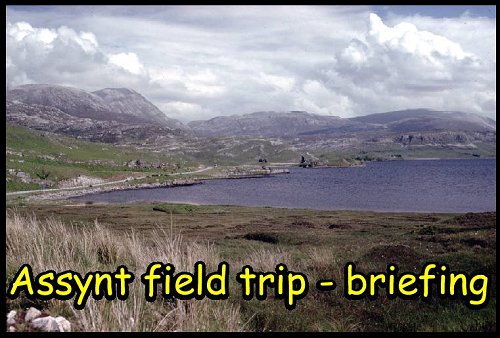

Field maps - what they look like
This field class is concerned with collecting geological data in the field , through careful observation and measurement linked to meticulous recordings in notebooks and on maps. These skills underpin much geological work and, on a general basis, are fundamental to good scientific practice. We will use as a context for our class a classical geological controversy which led to the discovery of a whole new geological process. Although our controversy dates from the end of the 19th century, we will be using the most appropriate modern methods to test hypotheses and build our own. The briefing today provides an introduction to the hypothesis and hence geological context for the field class. It also reinforces key skills in 3D visualisation that are important if we are to establish and understand how rock units relate to each other.
You can navigate directly to the 3D exercise, or to the regional information and field class info, see the protagonists or continue below to learn about the historical aspects.
In the middle 19th century, the NW Highlands of Scotland were crucial ground for a series of geological controversies. One of the most important centred on establishing a stratigraphic framework for rocks that could be applied, not only in the British Isles but also throughout the world. The key protagonist was Sir Roderick Impey Murchison, Director of the Geological Survey and one of the foremost "natural scientists" of the time. Murchison contended that the rocks of northern Scotland formed a regularly ascending succession, with the oldest in the west passing to progressively younger to the east. You can follow his succession on his cross-section by clicking here (use "back" on your browser to return).
Following Murchison's death his views were promoted by his acolyte, and successor as director of the survey, Archibald Geikie. The "regularly ascending succession" view became that of the scientific establishment and formed the basis of key text books of the day. However, Murchison's hypothesis was contested by Charles Lapworth (then newly-appointed Professor of Geology at Birmingham) and Charles Callaway. They thought Murchison's geological model was seriously flawed, implying that the stratigraphic order was not viable. If right, this had serious implications because a false stratigraphy was being applied world-wide. In 1883, with the controversy burning furiously, Geikie set his best geologists on the case. Their names were Ben Peach and John Horne. In the following five years they and their colleagues mapped a huge swathe of NW Scotland, often in difficult conditions. The result not only concluded the controversy surrounding Murchison's hypothesis, it also laid the foundation for many aspects of modern geology.
During the field class we will be following in the footsteps, literally at times, of Peach and Horne. But this is not an exercise in historical re-enactment. We will be applying all appropriate modern methods to test Murchison's hypothesis. In the process you will gain training in modern field geology. But first we will use satellite images and air-photographs, technologies obviously that were unavailable to our 19th century characters.